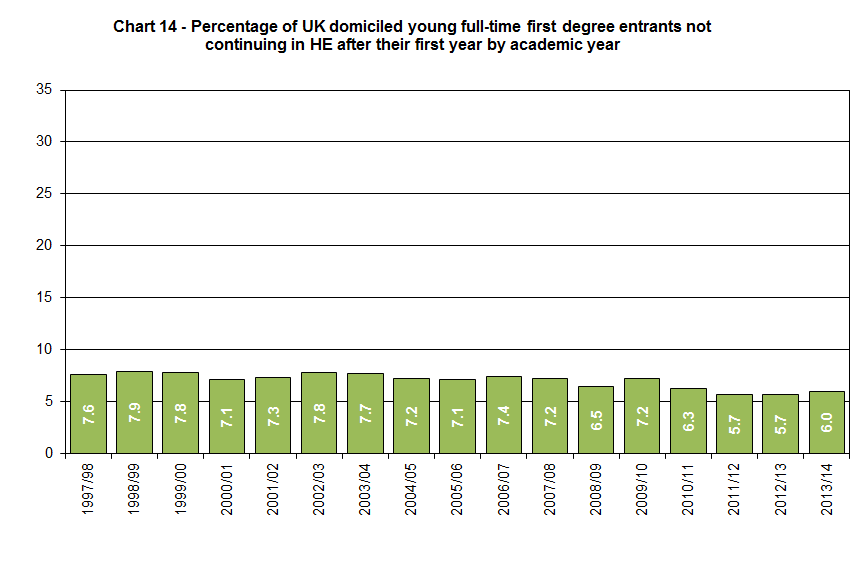The dropout rate from UK higher education institutions has increased for the first time in four years.
Six per cent of first degree entrants aged under 21 who enrolled in 2013-14 did not continue their studies beyond their first year, according to data from the Higher Education Statistics Agency.
This is an increase on the previous year’s non-continuation rate of 5.7 per cent, and follows a series of falls from a recent high of 7.2 per cent for the 2009-10 intake.

Les Ebdon, the director of fair access to higher education, said that he was “disappointed” by the figures.
He highlighted that the dropout rate for young students from disadvantaged backgrounds was rising even more rapidly. It stood at 8.2 per cent for the 2013-14 cohort, up 0.5 percentage point year-on-year.
“Universities and colleges have made a lot of progress in improving student retention in recent years, and retention rates in this country are very high by international standards, so I am disappointed to see that the trend of improvement has not continued in 2014-15,” Professor Ebdon said. “It’s also disappointing that non-completion rates for young students from the most disadvantaged backgrounds have risen faster than for those from other groups.
“The greater tendency for students from under-represented groups to drop out of their courses, compared to others, is already well known, and is just one aspect of a bigger problem. Disadvantaged students are also less likely to get a first or 2:1, or to go on to a graduate-level job after graduation.”
The Hesa data reveal significant variation in university performance on retention. London Metropolitan University had the highest dropout rate in the country, with nearly one in five (18.9 per cent) of young first degree entrants failing to stay on beyond year one.
It was followed by the University of Bolton (17 per cent); the University of the Highlands and Islands (14.4 per cent); the University of the West of Scotland (14.2 per cent); and University Campus Suffolk (13.6 per cent).
The best performers tended to be small, specialist institutions, with the Royal College of Music not having a single student dropping out.
Among larger providers, the lowest dropout rate was at the University of Cambridge (1.1 per cent), followed by Durham University (1.5 per cent) and the University of Bath (1.7 per cent).
Jo Johnson, the universities minister, said: “Dropout rates are low by historic standards but there are still too many students who are not getting the support they need. Helping more students to progress through their courses and into employment or further study is a central objective of our reforms and must remain a high priority for all higher education institutions.”
Register to continue
Why register?
- Registration is free and only takes a moment
- Once registered, you can read 3 articles a month
- Sign up for our newsletter
Subscribe
Or subscribe for unlimited access to:
- Unlimited access to news, views, insights & reviews
- Digital editions
- Digital access to THE’s university and college rankings analysis
Already registered or a current subscriber?






